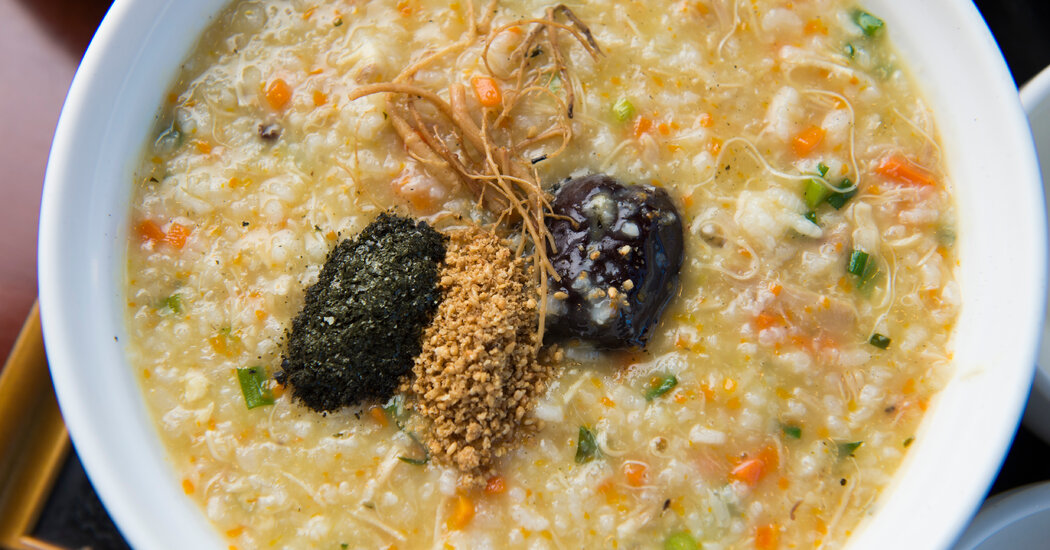
Yes, you can eat standout Korean food without going broke
I wrote this week about the rapid rise in Manhattan of Korean restaurants that qualify as fine dining, including Jungsik, Atomix, Cote and Oiji Mi. The term fine dining implies a certain attentiveness in service and, on the plate, an attention to detail that can become quite elaborate. The most useful way to define it, though, is as a price bracket. With some exceptions, fine dining is more expensive than other styles.
If you’re in a fine-dining restaurant that knows what it’s doing, then you should be rewarded for the money you’re spending with a memorable, pleasurable meal. And most of the dozen or so high-end places I write about will do just that, while rewiring your ideas about Korean flavors.
But what if you aren’t in the market for an expensive dinner? The good news is that New York City and nearby New Jersey, particularly Fort Lee and Edgewater, are full of Korean restaurants for every budget. Here are a few that are quite a bit less expensive than some of the hushed tasting counters. And keep in mind Haenyeo, in Brooklyn. I mention it in the article but it’s worth mentioning twice.
Bonjuk
The menu of this tranquil restaurant, with branches in Queens and Fort Lee, N.J. is a masterpiece of misdirection. The photos make katsu cutlets and seafood bibimbap look especially appealing, but you can get those in other places. Meanwhile, the star of Bonjuk, a thick, creamy, restorative bowl of savory rice called juk, appears under the ominous heading “nutritional porridge.”
Daesung Korean Noodle
The dining room is more inviting after a pandemic renovation that covered nearly every surface in warm, pale wood, like a sauna. But Daesung has been setting the standard for noodle soups in the Korean area of Queens for years. There are two varieties: kalguksu, with long, slurpable strands cut by knife; and sujebi, in which the broth is populated by shards and rags of dough torn by hand.
I Am Kimchi
In this compact and perpetually busy restaurant, half the customers will be eating Korean standbys, like fermented soybean stew or bulgogi hot pot. The other half comes for the pork cutlet under melted cheese, or pasta carbonara in so much sauce it’s practically a soup. Only a few items cost more than $15, and some of those will feed two or three people.
Cho Dang Gol
Cho Dang Gol has allowed fried chicken and other dishes to infiltrate the menu, but it is still unrivaled in its commitment to the Korean art of cooking with tofu. Tofu appears in many forms: in compressed tiles that stay intact on a hot griddle; in creamy slabs that cleave apart at the touch of a spoon; in downy, ricotta-like curds that leaven stews and bibimbaps.
Jeju Noodle Bar
Douglas Kim, the chef here, has the skill, eye for ingredients and inclination toward refining his ideas that would allow him to charge tasting-menu prices. The $150 rack of lamb may need to be put on an installment plan, but by and large he keeps things fairly modest, with a focus on elegantly accessorized noodle soups.
Okdongsik
The specialty — and the only thing to eat, aside from the dumplings, which are also excellent — is pork gomtang. It’s nothing but white rice in steaming, translucent broth topped with shaved pork, but the kitchen brings each element to its ideal state.
Woorijiip
Gone are the steam tables that once awed hungry Midtown office workers in droves. Now nearly every Korean classic you might possibly have an urge for — baked mackerel, octopus in chile sauce, and on and on — is packed up and stacked on shelves. If your meal needs reheating, make a detour to one of the waiting microwaves.



